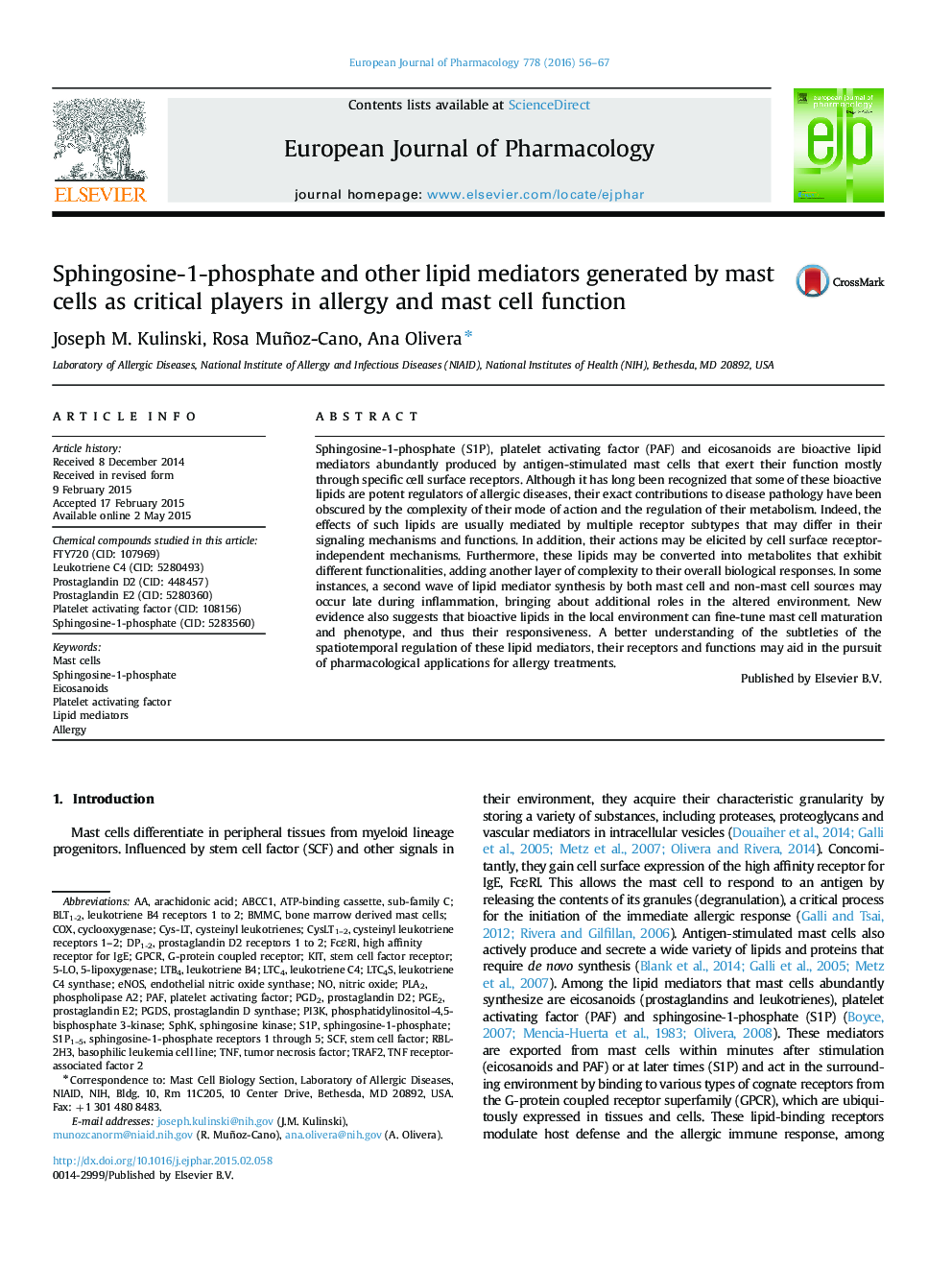| Article ID | Journal | Published Year | Pages | File Type |
|---|---|---|---|---|
| 2531060 | European Journal of Pharmacology | 2016 | 12 Pages |
Sphingosine-1-phosphate (S1P), platelet activating factor (PAF) and eicosanoids are bioactive lipid mediators abundantly produced by antigen-stimulated mast cells that exert their function mostly through specific cell surface receptors. Although it has long been recognized that some of these bioactive lipids are potent regulators of allergic diseases, their exact contributions to disease pathology have been obscured by the complexity of their mode of action and the regulation of their metabolism. Indeed, the effects of such lipids are usually mediated by multiple receptor subtypes that may differ in their signaling mechanisms and functions. In addition, their actions may be elicited by cell surface receptor-independent mechanisms. Furthermore, these lipids may be converted into metabolites that exhibit different functionalities, adding another layer of complexity to their overall biological responses. In some instances, a second wave of lipid mediator synthesis by both mast cell and non-mast cell sources may occur late during inflammation, bringing about additional roles in the altered environment. New evidence also suggests that bioactive lipids in the local environment can fine-tune mast cell maturation and phenotype, and thus their responsiveness. A better understanding of the subtleties of the spatiotemporal regulation of these lipid mediators, their receptors and functions may aid in the pursuit of pharmacological applications for allergy treatments.
